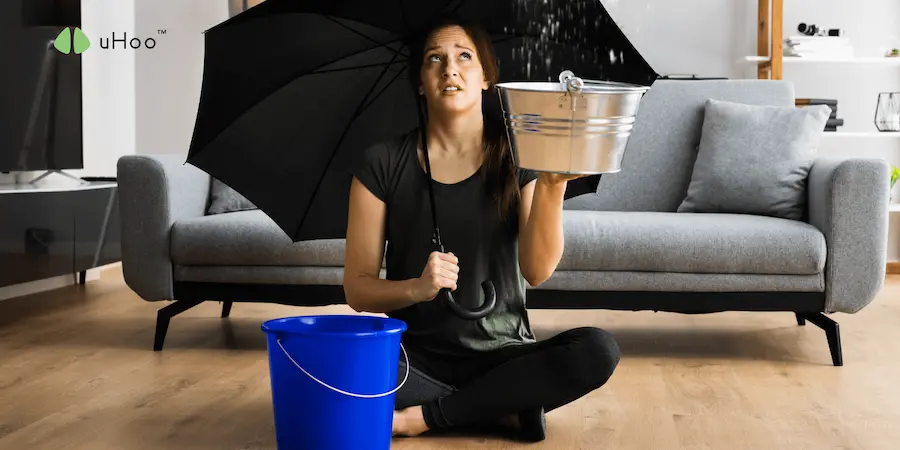Many homeowners tend to compartmentalize problems: leaks are plumbing issues, and air quality is a ventilation or filtration issue. But in reality, moisture from leaks directly feeds the most pervasive and harmful indoor air pollutants, making your air filters’ job much harder, if not impossible, to keep up.
The Interconnected Threat: How Leaks Undermine Air Filters
Consider how fixing leaks directly impacts the challenges your air filters face:
- Fueling Mold Growth – Filters Can’t Keep Up: This is the primary concern. A leaky pipe behind a wall, a damp crawl space, or a subtle roof drip provides the constant moisture that mold needs to grow. Once mold establishes itself, it releases countless microscopic spores into the air. While air filters can capture some of these spores, an active mold colony is a continuous source. Your filter will quickly become overwhelmed, clogged, and won’t be able to effectively filter other pollutants. Essentially, you’re trying to empty a bathtub with a teaspoon while the faucet is still running. Fixing leaks stops the source. Learn more via the uHoo Mold Index
- Increasing Humidity – Breeding Ground for Allergens: Leaks introduce excess moisture, significantly raising indoor humidity levels. High humidity creates an ideal environment not only for mold but also for dust mites. Air filters can trap dust mite allergens that are already airborne, but they don’t stop the mites themselves from breeding prolifically in damp conditions. Fixing leaks reduces overall humidity, making your home less hospitable to these allergens.
- Generating Harmful VOCs – Beyond Filter Capacity: Damp and decomposing building materials from prolonged leaks can off-gas Volatile Organic Compounds (VOCs) – chemical pollutants that contribute to “musty” odors and can cause respiratory irritation. While some air filters (especially those with activated carbon) can capture VOCs, a continuous source from ongoing moisture damage will eventually overwhelm the filter’s capacity, leading to recirculated chemical odors and a diminished filter lifespan. Fixing leaks prevents the release of these VOCs in the first place.
Integrated Air Care: A Holistic Approach
True integrated air care means addressing all facets of your indoor environment. While air filters are crucial for removing existing airborne particles, they are a reactive solution. Fixing leaks is a proactive measure that prevents the generation of many of the most problematic indoor air pollutants.
Think of it as a two-pronged strategy:
- Proactive Defense (Fixing Leaks): Eliminates the source of moisture that fuels mold, bacteria, and excessive allergens. This foundational step reduces the overall burden on your filtration systems.
- Reactive Defense (Air Filters): Captures the airborne particles that are still generated from daily life or those that may have entered from outside.
By prioritizing fixing leaks immediately and diligently, you are not only saving your home from structural damage but also significantly improving the effectiveness of your air filters and dramatically enhancing your overall indoor air quality. It’s an essential, foundational step for any homeowner serious about breathing truly clean air.
To continuously monitor for the subtle signs of moisture problems that necessitate fixing leaks, a uHoo air quality monitor can be an invaluable tool. By tracking real-time changes in humidity and VOC levels, it provides early alerts, empowering you to address leaks before they can fuel extensive mold growth and overwhelm your air filtration efforts.



